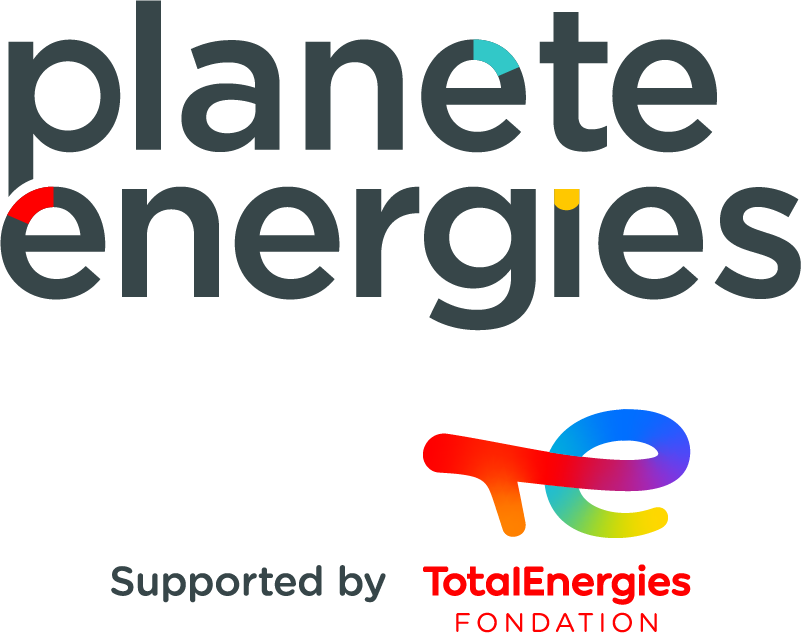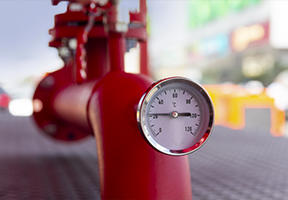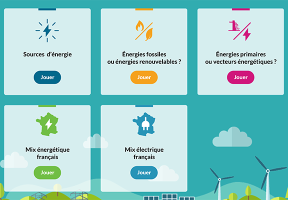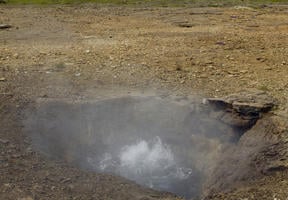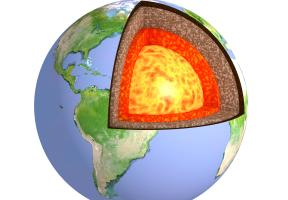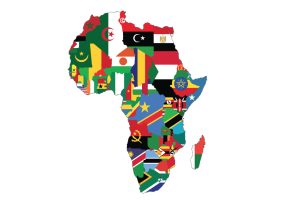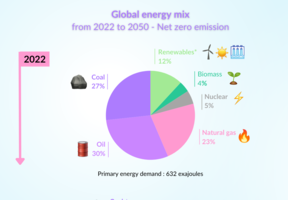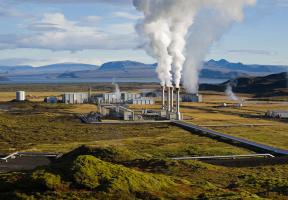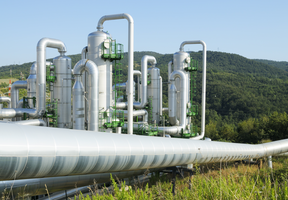How geothermal energy works in France
10 min read
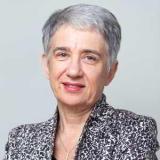
Michèle Cyna
Using Geothermal Energy to Produce Heat, Refrigeration and Cooling
Home energy systems offer bright prospects for producing , refrigeration and cooling thanks to their remarkable efficiency, very low operating costs, and increasingly light regulatory framework. While they are popular in new office buildings, they have a harder time convincing individual homeowners. Michèle Cyna, Chair of the Geothermal Energy Committee at the French Syndicate (SER), reviews developments in the field.
Heating, refrigeration and – as we shall see – cooling from underground sources thanks to geothermal energy is an idea that no doubt deserves more attention. This article focuses on very low‑temperature geothermal energy, which relies on heat pumps and is thus a separate phenomenon from the geothermal energy that provides high-temperature heating or is used to generate . The very low-temperature variety represents three-quarters of the geothermal energy produced in France, and its regulatory framework has been relaxed since 20141. It is currently possible to install systems between 10 and 200 meters deep, without too much red tape, in approximately 98% of France. The equipment can supply individual houses as well as large office buildings or city blocks.
Two Main Geothermal Techniques
The first technique used to harness geothermal energy is to pump water up from a phreatic zone. These zones can be found as little as 10 meters below the surface, because they are not underground “lakes”, but rather water that circulates, sometimes in small quantities, in the pores and fractures in the ground. The water exchanges its heat via a serpentine heat exchanger with the system installed in the building or the house in question.
The second technique, if there is no phreatic zone, is to install a probe in the subsoil. The probe creates a loop containing a which, as with the first technique, transfers its heat to the surface system via a heat exchanger.
The Rise of Geocooling
A heat pump connected to a circuit can produce heat in winter and cold air in summer, via an air conditioner. But very low-temperature geothermal energy can also provide “cool” temperatures. This new concept of geocooling has particularly high potential in the more temperate zones in France.
The water or heat transfer fluid is usually between 15°C and 20°C all year round. In the summer, the fluid brings the water in the building’s circuit to the same temperature, without even going through the heat pump. It will not provide true air conditioning, but in our climate it will guarantee a temperature about 5°C lower than the outside temperature. For example, when it’s 30°C outside it will be 25°C inside the offices. This is enough to create a feeling of coolness and comfort. Of course, if the temperature stays at 35°C for a long time, it might be necessary to use a more powerful air conditioner.
Geocooling – cool, not cold, that is – has an extraordinary coefficient of performance ( ) of about 60. The COP is the ratio of the electrical energy needed to run the pumps to the energy that the system produces. In order to lower the temperature by the same 5°C, a traditional air conditioner would have to use 60 times more electricity.
Another absolutely remarkable application is the tempered water loop. Instead of bringing water in just one building to a constant 15°C to 20°C, it is circulated around a loop that supplies an entire neighborhood. Decentralized heat pumps are added to the circuit and produce heating and cooling for an entire group of buildings. The new Airbus headquarters in Toulouse uses this system. After more than two years, the feedback is very positive. The back-up air conditioners, installed in case of severe heat waves, have never been used...
Very low-temperature geothermal energy is being used more and more in new office buildings, particularly in the Paris region, for example in the Aéroville mall near Roissy-Charles de Gaulle airport. In addition to the recognized efficiency factor, the developers benefit from the opportunity to receive an ecolabel. On the other hand, the market is generally sluggish for individual homes. The risk of a 10-to-20-meter well and not striking a phreatic zone often scares off homeowners. Lower fossil prices and improved insulation for homes are also a disincentive for seeking less costly energy solutions. It’s a shame, because these installations might be an expensive upfront investment, but their operating costs are unbeatably low...
Michèle Cyna is a graduate of École Polytechnique, École Nationale des Ponts et Chaussées, and MIT. Formerly Vice President, International Business Development at Veolia Transport, she is currently the Chief Executive Officer of BURGEAP, an environmental engineering group specializing in air, water and soil pollution, energy, health, the industrial environment, and nuclear power and plant dismantling. Michèle chairs the Geothermal Energy Committee at the French Renewable Energy Syndicate (SER).
- In France, regulations allow “minimal-impact geothermal energy” projects to be carried out following registration or a streamlined approval process.

Louis-Marie Denoyel
The Outlook for Geothermal Energy in France
Geothermal energy is recognized by the French public authorities as one of the most promising sources of renewable heat, alongside wood fuel, heat pumps, solar heating and . It also shows significant potential for “renewable cooling”, offering a more virtuous solution than traditional air conditioners. Louis-Marie Denoyel, project leader for Renewable Heat at the French Ministry for the Ecological and Inclusive Transition, explains.
There are several different types of geothermal energy, categorized depending on depth and temperature. They can be harnessed for a wide variety of individual and collective uses.
Deep low-temperature geothermal energy, between 30°C and 90°C, is well suited for district heating networks supplying neighborhoods of several thousand people, or industrial parks. In France, this type of heat generally lies at depths of 1,000 to 2,500 meters in aquifers, which can be formed from the remainders of ancient seas trapped in the porous layers of sedimentary basins, for example. The Dogger in the Paris Basin, and the Aquitaine and Lorraine Basins, have the most potential in the country. It would be beneficial to carry out precise exploratory drilling tests in order to pinpoint the locations and characteristics of the aquifers.
Once a pumping station has been installed, water is brought to the surface and a heat exchanger transfers its heat to a district heating system. Then the water is returned to the aquifer. The advantage is that the pumping station, which the underground water flows through for a short time, takes up little space, discharges no pollutants or noise, and is easy to maintain. After the initial investment to drill the hole and set up the district heating system, the operating costs are practically nothing for a foreseeable period of at least 30 years and often as much as 50 or 60 years. The main challenge is not to drill the holes too close together, so as not to exhaust a .
Deep high-temperature geothermal energy, with temperatures above 150°C, can be used to generate electricity. In France, this is already happening at Soultz-sous-Forêts in Alsace and Bouillante in Guadeloupe. There are also new projects, but the new multi-year energy plan has put the priority for public funding on recovering geothermal heat, which is less costly and more efficient than generating electricity.
Very Low-Temperature Geothermal Energy
When the water temperature is below 25°C, it is called very low-temperature geothermal energy. If drilling is not dangerous or harmful to the environment (shallow drilling, low-temperature water, low flow rate, etc.), it is referred to in France as “minimal-impact geothermal energy” and is subject to highly simplified regulation. Geothermal heat pumps are used.
This very low-temperature sector has very interesting potential: the resource can be used for heating and (or) cooling. This possibility will become more valuable in the future, as the European Union will soon be defining the concept of “renewable cooling”, which will most probably include the use of such geothermal resources.
Geothermal cooling has at least three major advantages over traditional air conditioning:
- Geothermal heat pumps are more efficient than air-to-air units and therefore consume less electricity. For this reason, there is less risk of overloading the power grid during a heat wave.
- A collective geothermal project in an office complex, for example, makes it possible to have a central system, so the refrigerants can be more efficiently managed than if they were in individual air-conditioning units. Refrigerants have a considerable effect on . On a scale where CO2 is one and methane is four, most refrigerants used today rate above 600! Given that the use of air conditioning is climbing exponentially worldwide, leaking refrigerants are no minor problem.
- Lastly, if everyone uses an air-to-air unit supplied with outside air, a “heat island” effect can cause a significant rise in local temperatures. With geothermal energy, the heat is re-injected into the ground and warms back up the resource, which can be used for heating in winter.
Geothermal heat systems, particularly large-scale projects, are supported by the public authorities through a “heat fund” managed by the French Environment and Energy Management Agency (ADEME) since 2009. Available funds rose by 20% in 2018, and 20% more was budgeted for 2019, bringing the total to €307 million. In 2018, 10% of the fund was dedicated to geothermal energy.
Louis-Marie Denoyel has been a project leader for Renewable Heat since September 2018 at the Directorate General for Energy and Climate, part of the French Ministry for the Ecological and Inclusive Transition. He is a graduate of École Polytechnique and the University of Cambridge, and is a Bridges, Water and Forests engineer. After studying engineering and economics, Louis-Marie chose to focus on European public energy policy and photovoltaic self-consumption. He is currently working to develop the renewable heat sector, among other things.
